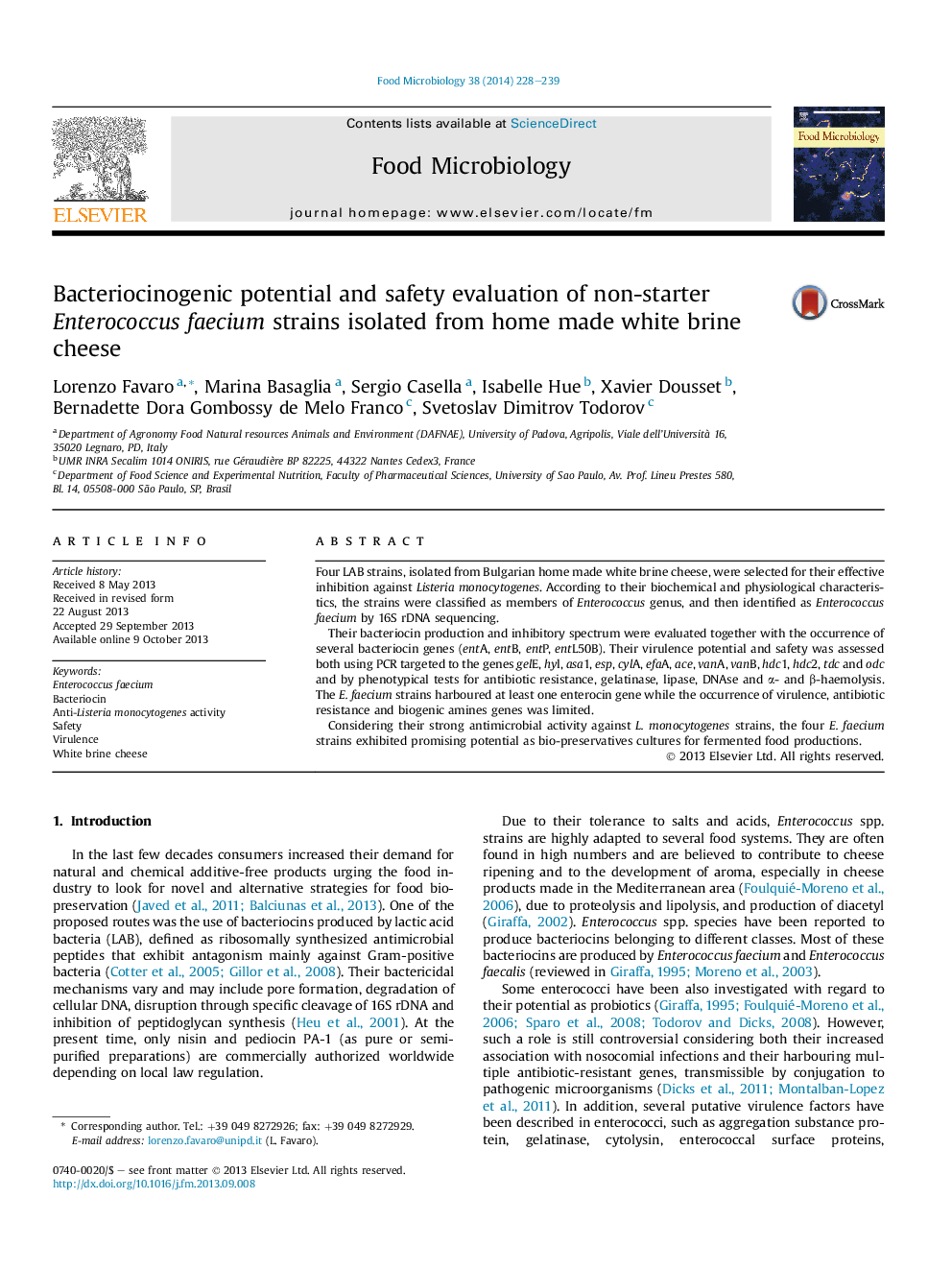| Article ID | Journal | Published Year | Pages | File Type |
|---|---|---|---|---|
| 4362939 | Food Microbiology | 2014 | 12 Pages |
•We isolated from white brine cheese four bacteriocin producing Enterococcus faecium strains.•Interestingly, they produced a unique and narrow spectrum of bacteriocin activity.•Their virulence and safety profiles were also assessed.•Due to their technological traits, they could be used as non-starter culture.
Four LAB strains, isolated from Bulgarian home made white brine cheese, were selected for their effective inhibition against Listeria monocytogenes. According to their biochemical and physiological characteristics, the strains were classified as members of Enterococcus genus, and then identified as Enterococcus faecium by 16S rDNA sequencing.Their bacteriocin production and inhibitory spectrum were evaluated together with the occurrence of several bacteriocin genes (entA, entB, entP, entL50B). Their virulence potential and safety was assessed both using PCR targeted to the genes gelE, hyl, asa1, esp, cylA, efaA, ace, vanA, vanB, hdc1, hdc2, tdc and odc and by phenotypical tests for antibiotic resistance, gelatinase, lipase, DNAse and α- and β-haemolysis. The E. faecium strains harboured at least one enterocin gene while the occurrence of virulence, antibiotic resistance and biogenic amines genes was limited.Considering their strong antimicrobial activity against L. monocytogenes strains, the four E. faecium strains exhibited promising potential as bio-preservatives cultures for fermented food productions.
